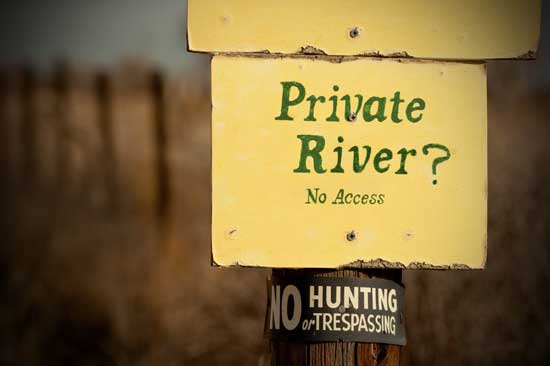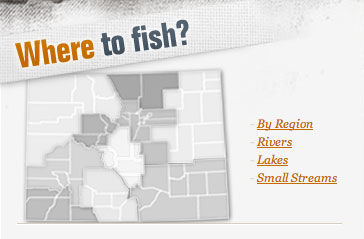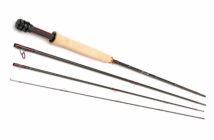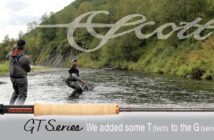 Unless you’ve been living under a rock lately, you understand the urgent concern over stream access. Where access is taken away, that can logically be construed as a threat to the fly fishing industry. No place to go, nobody to fish… nobody to fish, nobody to buy… and so on, and so forth.
Unless you’ve been living under a rock lately, you understand the urgent concern over stream access. Where access is taken away, that can logically be construed as a threat to the fly fishing industry. No place to go, nobody to fish… nobody to fish, nobody to buy… and so on, and so forth.
But is access really the thorny issue it’s made out to be? Some states, for better or worse, don’t have that “high water mark” open access law. In places like Colorado, for example, with its dense population and limited public water, fly fishing still flourishes… how can that be?
“Access is not a public/private issue, it is an information/knowledge issue,” says David Leinweber, owner of Angler’s Covey in Colorado Springs. Tell Leinweber that Colorado has limited access, and he’ll likely call you a whiner… there’s plenty of river to go around, and not enough effort by anglers to get there.
To aid in that effort, Leinweber has listed over 100 places to go fishing in Colorado on the Angler’s Covey website… 66 of them are less than two hours from the shop. Note the “Where to Fish” section right on the home page…
Where do you net out on doling out information? Obviously, nobody will complain about a surplus of public opportunity… but are the days of the “secret place” gone forever, or… for the sake of the fly shop, should they be?
Is the information barrier higher than any fence with a posted sign around prime trout water?





7 Comments
Yes, there are options for where to fish, but that does not change the fact that there is only so much water and more of it is turning private and being posted each year. If that trend continues . . . Just take a look at the Lincoln Hills Fishing Club, for example. You want to kill the local fly shop, try limiting access by charging $30,000 to fish small streams. These guys are closing waters that have been publicly fished up till now. Then, they are dumping in big dopey hatchery fish, to the determent of the wild fish, just so some guy paying enough money can get his picture taken with a big fish. High priced, high fence fishing. Is this what we want our sport to become? I’d like to see more water open to access, not less. I’d like more wild fish, not less. How about you?
David Leinweber doesn’t quite get it. Just because there’s 66 places to fish public water within two hours of his shop doesn’t mean that access is an “information/knowledge issue” as he put it. All the information and knowledge in the world doesn’t change the fact that once the fences and signs go up that access is lost forever. With more and more people taking up the sport, the public access areas will suffer the effects of overcrowding, the fishing will decline, and anglers will take up golf in droves.
Pull your head out of the sand David and join the fight to protect and preserve access to our states rivers and streams, or else get used to paying exorbitant lease fees just so your guides can have a couple hundred yards of water for their clients.
Do you know me?
Do you make judgments from a short quote?
I spent 3 months of last fall visiting with my customers and what I found out is access is a major issue. But instead of crying and whining about it I have researched and developed a plan. I compiled several action items and then prioritized them and what I discovered is there is far too much whining going on and too little action being taken.
I venture to say that most who read this are not even members of Trout Unlimited. It is a poor testament of our guide community when less than 20% are members of Trout Unlimited. Is $35 a year too much to help save our rivers and our livelihood? As a small business we have given several thousands of dollars to our local Trout Unlimited chapters and we even wrote the first check for Trees for Trout, a success stream restorations project.
I would also venture to say that most have not written your local newspaper editorial about access and protection issues. I have and you can read it here: http://www.gazette.com/articles/economic-115889-billion-industry.html
Over half of Colorado is owned by the public, is that not enough?
Colorado has over 9,000 miles of streams that hold fish, is that not enough?
Colorado has over 2,000 lakes and reservoirs, is that not enough?
I have been one of the first to stand in line to protect what we have and I do not treat this issue lightly. But from my research the lack of information on where to go far out weights other access issues for my customers. I personally fished 20 days between Memorial Day and Labor Day (not counting guide days) last year on public land and except for the group I was with I never saw another angler. It may be different in other states but Colorado has a lot to offer. Again I do not take what we have for granted and I am fighting to keep what we have, but pissing and moaning without taking steps to improve the situation is just talk.
If you want more fishing access, buy a map.
Or make a friend of a rancher who has been here for 100 plus years.
David,
I’m not trying to be a prick dude, but your original statements plus your response pretty much validates my comments. Your arguments are word for word the same arguments the anti-access crowd uses time and time again.
That you bring TU into this is laughable. TU hasn’t done a damn thing to protect access here or pretty much anywhere else in the west. They’ve time and time again sat idly by and failed to act each and every time access has been threatened in recent memory. On top of that they’ve used funds to improve streams that the rank and file member will never get to set foot on, let alone fish. They do good things for habitat and water quality but they fail miserably on access.
Colorado has 9,000 miles of streams and rivers, and that’s great but it doesn’t mean a damn thing to me or anyone else if we never get to fish it.
I have a map, and know plenty of ranchers. I’ve also been ticketed, photographed, followed, threatened and had firearms pointed at me while lawfully floating and fishing our states rivers. Ever float the middle Taylor, The South Platte, the Rio, the Eagle, the Gunny, Blue? If you have much, you might tend to see the issue a bit differently. Ever been to Montana, Idaho, Washington, Oregon, California, Nevada and fished? Is it just that their angling citizens are better with maps?
And lastly, as to your assertion that you’re first in line to protect this and that blah blah blah. That’s funny, I never miss a meeting, Legislative hearing, sportsmans caucus or any other function where access is discussed and I can’t recall ever running into the likes of you at such a function. Don’t bother though, it’s usually just a bunch of dudes like me pissing and moaning a bunch.
Fun Talkin to ya,
-Scott
Well put Scott. Thanks for working for access. I was told once when I was on the board of the Boulder TU chapter that even though it was the number one issue for members, the board would not pursue day access to the Boulder Watershed. Instead it paid big dollars for stream improvements to a stream that didn’t need it. It is terribly obvious that TU would much rather throw dollars at politicians over and over rather than at habitat and access. What is David thinking . . . he owns a shop that sells $700 fishing rods. I am betting that the vast majority of those rods are not being fished on all the miles of public small streams for brookies. I am guessing those $700 rods go to guys who think river access is very much a problem in Colorado. But what do they know, the are just pissin’ and moanin’.
I wonder what “private river” David does not want us floating on?
Steve
Colorado actually has 32,833.07671 miles of perennial streams. 13,362.40585 of that total is privately owned. That leaves roughly 19,470.67086 miles of streams that is publicly held. With a good map and a good pair of hiking boots you can have access to most of that water.
There are many stores that sell maps and if you prefer not to purchase from a local dealer I am sure you can find retailers online who can provide you with information on how to access more fishing that you can do in a life time… on public accessible water.
If you would like to fish a private section of water that may have been enhanced with $100,000 to $500,000 of stream improvements and then stocked with $2,000-$10,000 of lunker fish annually, not to mention the $10,000-$30,000 of property tax the owner pays to support the community at large. And don’t forget the liability insurance they pay just in case you do something stupid on their land. And add the management cost plus that Purina trout food bill…
Paying a small $40-$200 rod fee seems kind of reasonable.
The real issue in Colorado is energy exploration and the possible negative effects it can have on local streams. From oil drilling to natural gas hydraulic fracturing many of our remote and very fish-able “public” waters are being threatened. Just in the South Platte river basin we could have 300 addition natural gas wells by 2014.
And about my customers… well they seem to keep coming back and buy more… why?
Because they know me.
I have fly fished in Colorado for over 30 years and in that time spent 4 days total in Montana.
Why?
Because I cannot seem to get to all the great fishing we have here in beautiful Colorado.
And for the record, outside of 3/4 of a mile of the South Platte river that I help manage for the Boy Scouts so that kids can learn to fly fishing, I rarely fish private water.
Almost forgot… the average cost of a good map is around $10.
David, it is obvious you don’t get it. Colorado has access issues, especially with navigable waters. Your statement about not going to Montana does not really offer evidence to the contrary, it just means you know even less about the issue at hand. This is not about how much money some guy spends on stream “improvements” or how many diseased hatchery fish he dumps into a river. It is about private vs public ownership of rivers. I am sure you sing the praises of the Donny Beavers of the world for “saving” rivers from the masses.
I am not even sure what you are getting at with the map thing. I know the places I fish very well and look at maps often. This has nothing to do with someone closing access to a river.